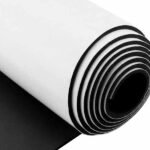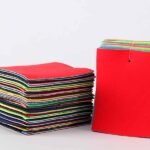Over time, improperly stored koozies lose their effectiveness, look worn-out, and even develop unwanted odors. I used to see my favorite koozies fall victim to damp storage conditions and mishandling. This not only reduced their lifespan but also affected their insulating properties. After trying various methods, I discovered that proper storage techniques can protect quality and extend life. In this guide, I share step-by-step practices to keep your koozies fresh, durable, and ready for every outdoor event.
The best way to store koozies is by keeping them clean, dry, and away from direct sunlight. Using proper containers and temperature-controlled spaces preserves their quality and prevents odor and mildew build-up.
I once found my koozies stacked in a damp corner, and they quickly became moldy. Since switching to a proper storage routine, I enjoy consistently fresh, high-quality koozies. The following sections explain each aspect in detail to help you implement a similar routine.
Why is Storing Koozies So Important?
Proper storage helps preserve the insulation and appearance of koozies. It protects them from moisture, dust, and damage that can lead to premature aging or loss of flexibility. I learned that neglecting storage can lead to foul odors and reduced effectiveness. Understanding the importance of storage allows brands and retailers to maintain a high-quality product that impresses customers every time.
Storing koozies correctly ensures that the neoprene remains soft, flexible, and effective at insulation. This care not only prolongs their lifespan but also retains their appearance, making them ready for use at any event.
Further Exploration: Preservation of Insulation and Material Quality
Key Reasons for Proper Storage
- Moisture Control: Moist air can lead to mildew.
- Avoiding UV Exposure: Direct sunlight can weaken neoprene.
- Protection from Dust: Keeps the fabric clean and bright.
| Factor | Effect if Neglected | Recommended Action |
|---|---|---|
| Moisture | Leads to mold and mildew | Store in a dry place |
| UV Exposure | Causes fading and brittleness | Use UV-protective covers |
| Dust/Contaminants | Reduces appearance and hygiene | Cover with breathable fabric covers |
By paying attention to these storage aspects, the koozies not only remain functional but also attractive to buyers.
Which Factors Can Affect a Koozie’s Durability and Freshness?
Multiple factors have a direct impact on a koozie’s longevity and freshness. Environmental conditions, cleaning frequency, and storage methods can all play a role. I noticed that stored koozies in humid or dusty areas quickly became discolored and stiff. Identifying the right factors is essential to adjust storage methods appropriately and extend their lifespan.
Key factors include humidity, temperature, light exposure, and the presence of contaminants. Managing these factors can help maintain the original quality and appeal of the koozie over time.
Further Exploration: Understanding Environmental Impact
Environmental Conditions
- Humidity: High moisture levels accelerate mold growth.
- Temperature: Extreme heat or cold can alter neoprene texture.
- Light Exposure: Direct sunlight degrades color and elasticity.
| Environmental Factor | Impact on Koozies | Control Measure |
|---|---|---|
| High Humidity | Promotes mildew and odors | Use dehumidifiers or store in dry areas |
| Extreme Temperatures | Makes neoprene brittle | Keep in moderate, climate-controlled space |
| Sunlight | Fades and weakens fabric | Store in a shaded, UV-protected area |
Storing koozies in regulated conditions helps maintain their durability and aesthetic appeal.
How Do You Prevent Unpleasant Odors and Mildew in Neoprene Koozies?
Unpleasant odors and mildew are common when koozies are stored without proper care. Moisture retention and lack of airflow cause these problems. I once experienced musty koozies that affected their performance. The solution lies in ensuring they are completely dry and stored in a ventilated space. This prevents dampness and minimizes bacterial growth responsible for bad smells.
The best practice is to clean, thoroughly dry, and then store koozies in an area with good air circulation. Using anti-mildew treatments can further reduce the risk of odor and deterioration.
Further Exploration: Techniques to Stop Odors and Mildew
Preventative Measures
- Complete Drying: Always allow koozies to dry fully before storage.
- Air Circulation: Use a well-ventilated room or dehumidifier.
- Antimicrobial Sprays: Light applications can deter bacteria growth.
| Prevention Tip | Benefit | How to Implement |
|---|---|---|
| Full Drying | Prevents moisture retention | Hang in a cool, dry place |
| Adequate Ventilation | Reduces humidity buildup | Use fans or store in airy cabinets |
| Antimicrobial Spray | Inhibits bacterial growth | Lightly mist the surface before storage |
Routine care with these techniques is essential for maintaining a fresh and odor-free product.
Are There Specific Storage Methods for Bulk or Wholesale Koozies?
When dealing with large quantities of koozies, standard storage methods may not suffice. Bulk items require organized systems that ensure each item is protected. I noticed that poorly managed bulk storage can lead to stacking damage and increased exposure to dust and moisture. It is crucial to implement methods that preserve the quality of every unit, especially in a wholesale environment.
For bulk storage, the ideal method involves using clean, breathable containers or shelves that prevent overcrowding. Clearly label storage areas and check regularly to maintain a constant, optimal environment.
Further Exploration: Bulk Storage Best Practices
Organizational Strategies
- Grouping by Batch: Keep similar designs together.
- Use of Racks: Prevents heavy stacking on top of delicate items.
- Regular Inventory Check: Helps spot and correct issues early.
| Storage Method | Advantage | Recommended Usage |
|---|---|---|
| Breathable Bins | Maintains air circulation | Ideal for large quantities |
| Shelving Units | Prevents pressure damage | Useful in warehouse settings |
| Labeled Storage | Simplifies retrieval and management | Crucial for organized warehouses |
Effective bulk storage techniques protect the integrity of each koozie while streamlining inventory management for wholesale orders.
Is Temperature Control Important for Long-Term Koozie Storage?
Temperature plays a significant role in preserving the material properties of koozies. Extreme heat can cause neoprene to harden, while very low temperatures might make it brittle. I’ve seen items stored in uncontrolled environments deteriorate rapidly. Maintaining a stable and moderate temperature is thus essential for ensuring a long product life.
A controlled environment, ideally between 18°C and 25°C (64°F to 77°F), helps maintain optimum material flexibility and color.
Further Exploration: Temperature Management Techniques
Why Moderate Temperature Is Key
- Prevents Material Degradation: Keeps neoprene soft.
- Maintains Color and Texture: Avoids fading or brittleness.
- Enhances Overall Durability: Extends the life expectancy.
| Temperature Range | Benefit | How to Achieve |
|---|---|---|
| 18°C – 25°C | Maintains material properties | Use climate-controlled storage |
| Below 18°C | Risk of brittleness | Avoid refrigerated or cold spaces |
| Above 25°C | May cause warping or color loss | Monitor with a thermometer |
Investing in temperature control for your storage area can markedly improve the long-term performance of your koozies.
Do Custom-Printed Koozies Require Different Care?
Custom-printed koozies often feature intricate designs that need extra care. The printing process can sometimes use inks that are sensitive to harsh chemicals or extreme conditions. I have seen custom koozies lose their vibrant appearance due to improper storage. It is important to consider additional care methods to preserve both the print and the material.
Custom-printed koozies should be stored in a way that avoids direct contact with harsh substances and excessive moisture. Gentle cleaning methods and controlled environments are essential to preserve their custom details and overall quality.
Further Exploration: Special Care for Custom Designs
Handling and Storage Tips for Customized Items
- Avoid Abrasive Cleaners: Use only gentle detergents to maintain print clarity.
- Separate Storage: Keep custom items away from non-printed products to prevent color transfer.
- Soft Packaging: Use fabric or padded covers to protect the printed surface from scratches.
| Care Aspect | Impact on Print Quality | Recommended Approach |
|---|---|---|
| Cleaning Method | Harsh cleaning may fade ink | Use mild detergents or specialized cleaners |
| Storage Environment | Moisture and heat damage prints | Climate-controlled, shaded areas |
| Packaging | Prevents scratches and abrasion | Soft, non-abrasive materials |
Extra caution with custom-printed items helps maintain their brand value and visual appeal over time.
Which Storage Containers or Shelving Options Work Best?
The choice of storage container or shelving directly affects the condition of koozies. Containers should be breathable and protect against dust, moisture, and physical damage. I experimented with various options before finding the most effective method for preserving quality. The right storage option also improves inventory management in a wholesale setting.
Sturdy, ventilated bins or adjustable shelves are ideal. They provide protection while allowing air circulation, preventing the accumulation of humidity and dust.
Further Exploration: Evaluating Storage Options
Comparison of Storage Containers
- Plastic Bins with Air Holes: Offer structure and ventilation.
- Fabric Storage Bags: Lightweight and breathable but less protective.
- Adjustable Shelving: Easy organization in warehouses.
| Storage Option | Advantages | Drawbacks |
|---|---|---|
| Ventilated Plastic Bins | Durable, maintain air flow | May require extra space |
| Fabric Storage Bags | Lightweight and foldable | Less resistant to physical impact |
| Adjustable Shelving | Efficient for bulk storage | Needs careful arrangement for airflow |
Selecting the best storage solution depends on volume, available space, and ease of access, ensuring each koozie retains its quality until it reaches the customer.
Conclustion
Proper storage is crucial for maintaining the quality and longevity of koozies. Ensuring that koozies are kept in a dry, temperature-controlled, and well-ventilated environment minimizes the risk of mildew, unpleasant odors, and material degradation. Following detailed cleaning processes before storage, using appropriate storage containers, and implementing routine checks are key to preserving both standard and custom-printed koozies. Effective storage solutions not only protect the product but also enhance its market appeal, especially for brands, wholesalers, and large retailers looking to maintain a high standard.
At Szoneier, we have years of experience in manufacturing top-quality neoprene products. With 20 advanced production lines in China, we serve B2B clients, wholesalers, OEM, and ODM needs across Europe, North America, and Australia. Our products are designed to be soft, elastic, shock-resistant, and waterproof. We offer flexible customization options, low MOQ, free samples, and free color cards.











